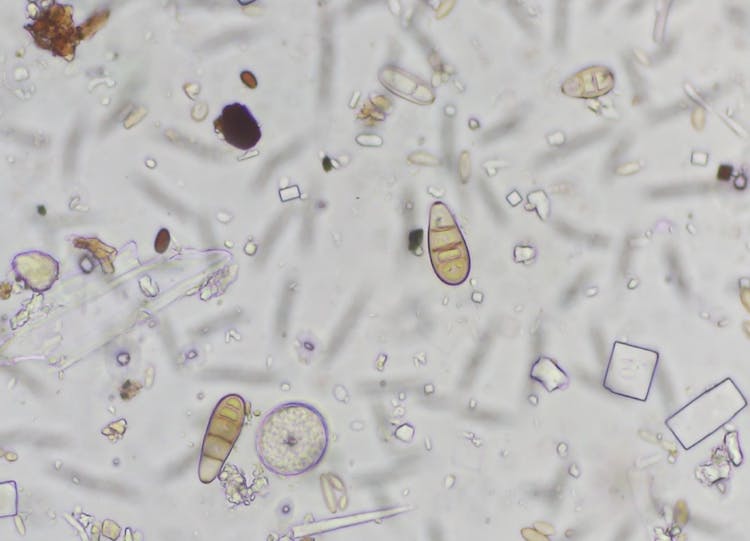Pathology|25 Nov 2024
Advancing Disease Detection: Eutypa and Botryosphaeria Models
Crop diseases caused by fungal pathogens continue to challenge agricultural industries worldwide, threatening yields, quality, and profitability.
BioScout
6 Min ReadCrop diseases caused by fungal pathogens continue to challenge agricultural industries worldwide, threatening yields, quality, and profitability. Two of the most significant culprits in perennial crops such as grapevines and tree fruits are Eutypa spp. and Botryosphaeria spp. These pathogens can cause devastating diseases, including dieback, that severely impact crop health and productivity.
To combat these challenges, BioScout is proud to announce its new detection models for Eutypa spp. and Botryosphaeria spp. Leveraging advanced machine learning and cutting-edge spore-trapping technology, these models represent a major breakthrough in proactive disease management. This blog delves into the significance of these pathogens, the innovative detection models, and how they can change the way growers manage disease risks.
Understanding the Threat: Eutypa and Botryosphaeri
Eutypa spp.
Eutypa dieback, caused by Eutypa spp., is a fungal disease that primarily affects grapevines but can also impact other tree crops, such as apricots and cherries. The fungus infects plants through pruning wounds, often lying dormant before symptoms emerge. Over time, it kills tissue, leading to reduced yields and dieback of branches.
Key Characteristics of Eutypa Dieback:
· Stunted shoots and delayed budburst.
· Necrotic wood with dark discoloration.
· A significant reduction in crop yields.
Eutypa dieback is particularly challenging because symptoms often appear years after the initial infection, making early detection and management critical.
Botryosphaeria spp.
Botryosphaeria dieback, also known as Botryosphaeria canker, is caused by Botryosphaeria spp. and affects a wide range of crops, including grapevines, almonds, and stone fruits. The disease enters plants through wounds and rapidly spreads, causing cankers, dieback, and reduced productivity.
Key Characteristics of Botryosphaeria Dieback:
· Cankers that expand over time, girdling branches.
· Dieback of infected limbs.
· Potential for secondary infections, worsening plant health.
The combined economic impact of Eutypa and Botryosphaeria diseases is staggering, with billions lost annually in global agricultural markets. Traditional management strategies rely heavily on fungicide applications and wound sealing, which can be labor-intensive and reactive.
BioScout’s New Detection Models
BioScout’s new detection models for Eutypa spp. and Botryosphaeria spp. are game-changing tools designed to provide early warnings and actionable insights for managing these diseases.
Eutypa spp. Ascospore Detection Model
The Eutypa detection model identifies ascospores—the reproductive spores of the Eutypa spp. fungus. These spores are released into the air during wet conditions and can infect crops through pruning wounds.
By detecting ascospores in the air, this model allows growers to:
· Time Preventative Measures: Apply fungicides and wound sealants during high-risk periods.
· Reduce Disease Spread: Minimise the chances of infection by identifying spore presence before symptoms develop.
· Plan Pruning Practices: Schedule pruning during periods of low spore activity to reduce infection risk.
Botryosphaeria spp. Conidiospore Detection Model
The Botryosphaeria model focuses on detecting conidiospores, the asexual spores responsible for spreading Botryosphaeria spp. These spores are often released during humid conditions, making it critical to monitor their presence.
With this model, growers can:
· Predict Outbreaks: Identify periods of high spore release and take timely action.
· Optimise Treatments: Target fungicide applications based on real-time spore data, reducing unnecessary chemical use.
· Improve Orchard and Vineyard Management: Incorporate spore activity data into broader disease management strategies.
How the Detection Models Work
BioScout’s system integrates real-time spore tracking technology, combining advanced spore traps, weather monitoring, and machine learning models. The process is seamless:
· Spore Collection: BioScout’s spore traps autonomously collect airborne spores, operating continuously without manual intervention.
· Spore Identification: Using machine learning, the system identifies Eutypa ascospores and Botryosphaeria conidiospores with high precision.
· Data Delivery: Insights are sent directly to the user’s dashboard, accessible via phone or desktop.
· Actionable Alerts: Users receive real-time alerts about spore activity, enabling them to take immediate action.
The Benefits for Farmers
BioScout’s new detection models provide a range of benefits to farmers, agronomists, and vineyard managers:
· Early Detection: Spot spores in the air before infections occur, providing a crucial time advantage.
· Targeted Management: Use precise data to apply fungicides only when needed, saving costs and reducing environmental impact.
· Improved Yield Protection: Protect crops from disease-related losses by addressing risks proactively.
· Sustainable Practices: Minimise chemical use and adopt a data-driven approach to disease management.
· Peace of Mind: Rest easy knowing your crops are under constant surveillance, with actionable insights at your fingertips.
What’s Next: Fusarium Detection Model
BioScout isn’t stopping here. Next up is the development of a Fusarium spp. Microconidia Detection Model, targeting another major crop pathogen. Stay tuned for updates as we continue to expand our library of disease detection models and empower growers with cutting-edge tools.
The launch of BioScout’s Eutypa and Botryosphaeria detection models marks a significant milestone in crop disease management. By combining real-time spore tracking with advanced analytics, these models give growers the tools they need to stay ahead of two of the most destructive crop pathogens.
With BioScout, farmers can shift from reactive to proactive disease management, protecting their crops, reducing losses, and contributing to more sustainable agricultural practices. As we expand our capabilities, BioScout remains committed to empowering growers with the insights they need to thrive in an increasingly challenging environment.


